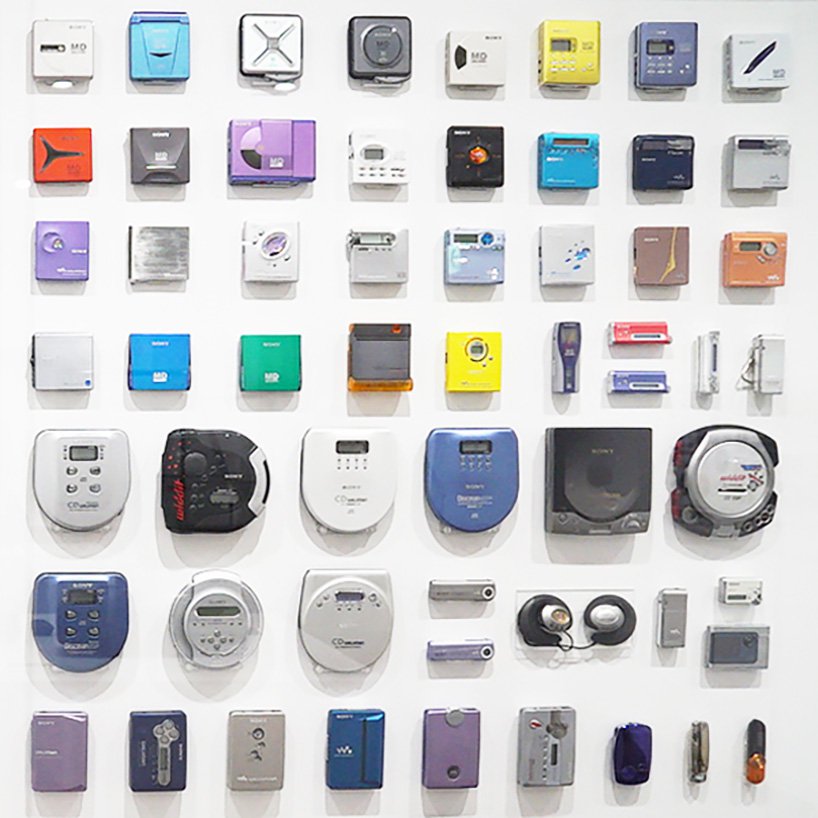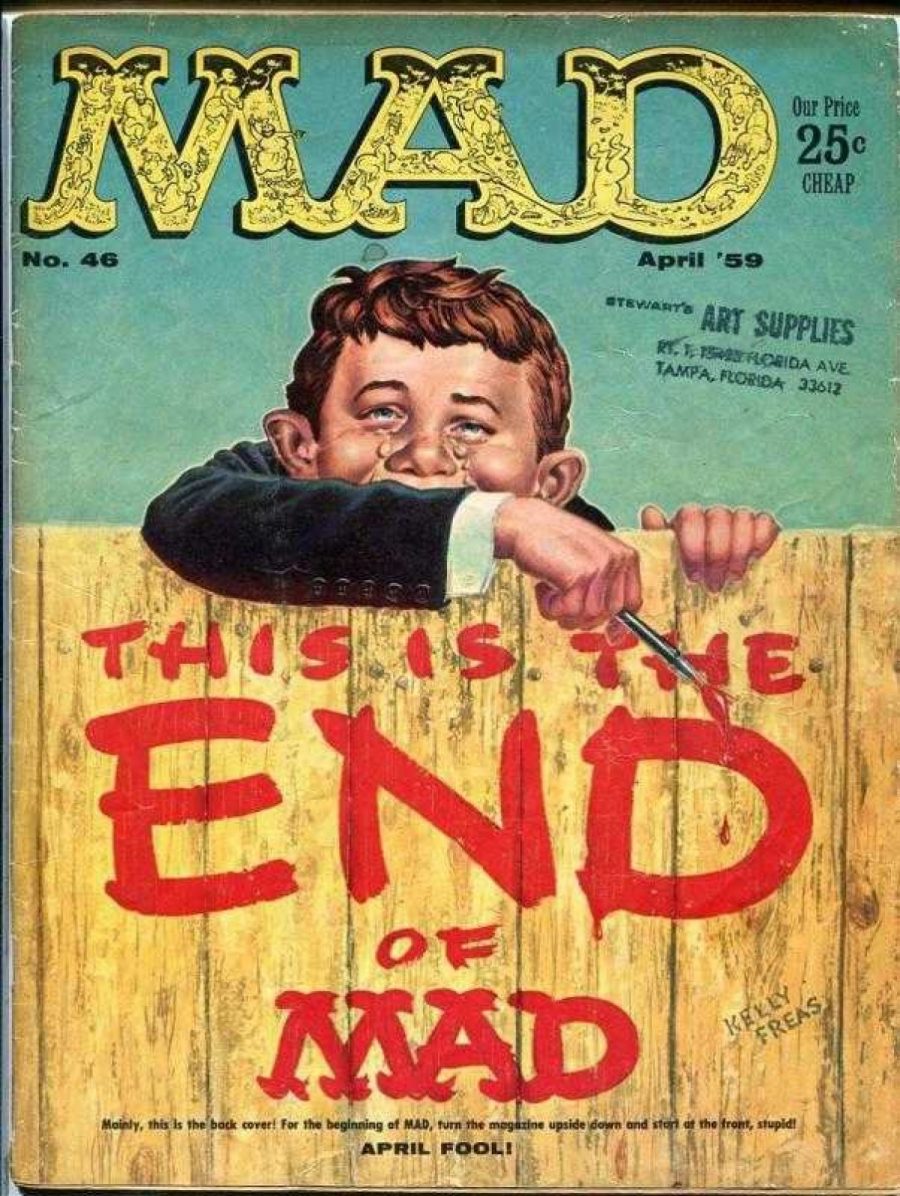[Most Recent Entries] [Calendar View]
Friday, July 5th, 2019
| Time | Event |
| 8:00a | The Walkman Turns 40: See Every Generation of Sony’s the Iconic Personal Stereo in One Minute Do you remember your first Walkman? If you grew up after the cassette era, of course, you might have owned a CD-playing Discman instead, or maybe — just maybe — even a Minidisc Walkman. Nowadays you probably have an iPod or iPod-like digital audio player as well as a cellphone equipped to serve the same purpose. But all the ways in which you've ever taken your tunes on the go evolved from a common technological ancestor: Sony's TPS-L2, which debuted on the market 40 years ago this month. First marketed in the United States as the Soundabout and the United Kingdom as the Stowaway, it didn't take long to achieve worldwide success under the Japanese-English brand name that long ago became a byword for the personal stereo. "To celebrate the Walkman's 40th anniversary, Sony has opened an exhibition in Tokyo’s bustling Ginza district," writes designboom's Juliana Neira. "Titled #009 WALKMAN IN THE PARK 40 Years Since 'the Day the Music Walked,' the exhibition focuses on the people for whom the Walkman has been a part of their everyday life." It also includes a wall "featuring around 230 versions of the Walkman throughout its 40-year history. From the nostalgic older models, all the way up to the latest models, the exhibit allows visitors to take in the changes in designs, specifications, and media formats over the years." You can see all the representative Walkman models from throughout the device's four decades of history in the minute-long official video above.
The Walkman defined an era of personal technology, but its brand hasn't weathered so well in the 21st century. "The beautifully designed, easy-to-use TPS-L2 was the device that liberated the cassette from living room hi-fis and car tape decks to truly make music portable," writes Quartz's Mike Murphy. But "a great many of the products that Sony once dominated with have been replaced, or have been consolidated into other devices. Over the years, Sony has made fantastic camcorders, stereo components, cameras, portable media players, and phones. Relatively few people buy most of these products anymore, with the smartphone usurping many of these devices’ functions." Today's Walkman devices don't reflect "the influential (and often experimental) Sony of yesterday. And with Apple grappling with its own existential questions about its future, who is left to take up the mantle of the king of consumer electronics?" Still, when we put on our headphones or pop in our earbuds on the morning commute and see that everyone else around us has done the same, we have to admit that we live in the world the Walkman created. This has its downsides, as Amanda Petrusich acknowledges in a New Yorker piece on public headphone-wearing: these include "the disconnection they facilitate" (and the hand-wringing about that disconnection they encourage) as well as the engineering of music itself to accommodate low-quality audio reproduction. But then, "ambling down a city street with headphones on — you know, maybe it’s dusk, maybe it’s midsummer, maybe you had a really nice day — is, without a doubt, one of life’s simplest and most perfect joys." Sony's music-loving co-founder Masaru Ibuka, commissioner of the original Walkman's design, must have known similar joys himself. But what would he make of podcasts? via designboom Related Content: City of Eight Million Soundtracks Based in Seoul, Colin Marshall writes and broadcasts on cities, language, and culture. His projects include the book The Stateless City: a Walk through 21st-Century Los Angeles and the video series The City in Cinema. Follow him on Twitter at @colinmarshall, on Facebook, or on Instagram. The Walkman Turns 40: See Every Generation of Sony’s the Iconic Personal Stereo in One Minute is a post from: Open Culture. Follow us on Facebook, Twitter, and Google Plus, or get our Daily Email. And don't miss our big collections of Free Online Courses, Free Online Movies, Free eBooks, Free Audio Books, Free Foreign Language Lessons, and MOOCs. |
| 8:00a | The End of an Era: MAD Magazine Will Publish Its Last Issue With Original Content This Fall
As a cultural reference, MAD magazine may have died decades ago. This is a not a disparagement, but a statement of fact. The kind of satire the august, anarchic comic first unleashed on the world of 1952 debuted in a cultural milieu that is no more, and a form—the illustrated, satirical periodical—that is increasingly niche. MAD left an indelible impression on American publishing’s past, but as the magazine’s legendary cartoonist Al Jaffee tells The Washington Post, “it’s mostly nostalgia now.” Responding to the market’s cues, MAD will more or less disappear from newsstands, publishing legacy content on a subscription-only basis and on the direct market, “a.k.a. specialty and comic book stores,” writes Gizmodo, “like the vast majority of DC’s comics output is already.” MAD shaped itself in opposition to Cold War paranoia and never seemed to find a new edge after favorite targets like Richard Nixon and Ronald Reagan left the scene. The magazine turned almost exclusively to pop culture parody in the 90s. As ABC News reports, MAD “peaked at 2.8 million subscribers in 1973,” then began its decline, with only “140,000 left as of 2017.” The magazine’s founding editor, cartoonist Harvey Kurtzman, passed away in 1993. His successor Al Feldstein, who brought the magazine to international prominence, died in 2014. MAD's longtime, tight-knit staff of writers and cartoonists are mostly retired, and most are sanguine about the winding down. “It’s been a logical development,” comments another MAD cartooning legend, Sergio Aragonés. To wit, after Issue 10 (MAD re-numbered last June) comes out this fall, there will be no new content, “except for the end-of-year specials,” notes The Post. “All issues after that will be republished content culled from 67 years of publication.” This still represents a great way for newcomers to MAD to catch up on its wildly skewed view of the last half of the 20th century, though some imagination is required to appreciate how subversive their humor was for much of its run. MAD inspired countless offshoots in the decade after its founding, setting the tone for radical campus publications, countercultural cartoonists, and comic writers, some of whom went on to become Stephen Colbert and Judd Apatow, who both wrote in the pages of MAD about how much the magazine meant to them during their apprentice years. The list of MAD devotees, both famous and not (I count myself among the latter), runs into the millions, but it runs along some obvious demographic divides. As the magazine is poised to become a gift-shop version of itself, tributes have poured in for its editors, writers, and cartoonists—all of them, to a man, well, men. And most of those tributes—those from prominent cartoonists and writers claiming MAD as a formative influence, at least—are also from men of a certain generation, most of them straight and white. Such market segmentation, one might say, speaks to the way MAD's brand of political satire remained embedded in its heyday. As laid-back cartoonists Jaffee and Aragonés recognize, you can’t stay young and relevant forever—though MAD had a remarkably good run. The Post offers a notable example of Mad’s passage into history. When the current president “mockingly referred to Democratic presidential candidate Pete Buttigieg as Alfred E. Neuman”—the once-ubiquitous, gap-toothed symbol of take-no-prisoners irreverence—the 37-year-old Buttigieg replied, “I’ll be honest. I had to Google that.” Related Content: A Gallery of Mad Magazine’s Rollicking Fake Advertisements from the 1960s Mad Magazine’s Al Jaffee & Other Cartoonists Create Animations to End Distracted Driving Josh Jones is a writer and musician based in Durham, NC. Follow him at @jdmagness The End of an Era: MAD Magazine Will Publish Its Last Issue With Original Content This Fall is a post from: Open Culture. Follow us on Facebook, Twitter, and Google Plus, or get our Daily Email. And don't miss our big collections of Free Online Courses, Free Online Movies, Free eBooks, Free Audio Books, Free Foreign Language Lessons, and MOOCs. |
| 2:00p | The Secret Language of Trees: A Charming Animated Lesson Explains How Trees Share Information with Each Other Shel Silverstein’s bittersweet classic The Giving Tree paints an inaccurate view of trees as simple, easily victimized loners. If only the titular character had had a same-species best friend around to talk some sense into her when her human pal started helping himself to her branches… You’ve Gotta Be Kidding Me Tree, or maybe No Bullshit Tree. You’ve Gotta Be Kidding Me Tree could’ve passed some vital nutrients to The Giving Tree, whose self care regimen is clearly not cutting it, via the mycorrhizae system, a vast network of filament-like tree roots and symbiotic soil fungi. That same system could serve as the switchboard by which You’ve Gotta Be Kidding Me Tree could alert the extended Tree family to the dangers of prolonged association with cute, but needy kids. Imagine the upbeat ending, had Silverstein gone light—The Giving Tree N’ Friends. Not as poignant perhaps, but not entirely inaccurate from a scientific standpoint. As forest ecologists Suzanne Simard and Camille Defrenne point out in the animated TED-Ed lesson, "The Secret Language of Trees," above, trees have large family (forgive me) trees, whose living members are in constant communication, using the mycorrhizae system. Hosting multiple fungal species allows each tree to connect with a wider network, as each group of symbiotic shrooms spreads information to their own personal crews, party line style. On the other end, the receiving tree can identify its relation to the tree of origin, whether they are both members of what we humans refer to as a nuclear family, or much more distant relations. And while this giant subterranean system for sharing information and resources is specific to trees, when we consider how many other forest denizens depend on trees for food and shelter, the message system seems even more vital to the planet’s health. Defrenne and Simard’s full TED-Ed lesson, complete with quiz, customizable lesson plan, and discussion topics, can be found here. Simard delves more deeply into the topic in the 18-minute TED Talk, "How Trees Talk to Each Other," below. View more of animator Avi Ofer’s charming work here. Related Content: 3,000-Year-Old Olive Tree on the Island of Crete Still Produces Olives Today Ayun Halliday is an author, illustrator, theater maker and Chief Primatologist of the East Village Inky zine. Follow her @AyunHalliday. The Secret Language of Trees: A Charming Animated Lesson Explains How Trees Share Information with Each Other is a post from: Open Culture. Follow us on Facebook, Twitter, and Google Plus, or get our Daily Email. And don't miss our big collections of Free Online Courses, Free Online Movies, Free eBooks, Free Audio Books, Free Foreign Language Lessons, and MOOCs. |
| << Previous Day |
2019/07/05 [Calendar] |
Next Day >> |




